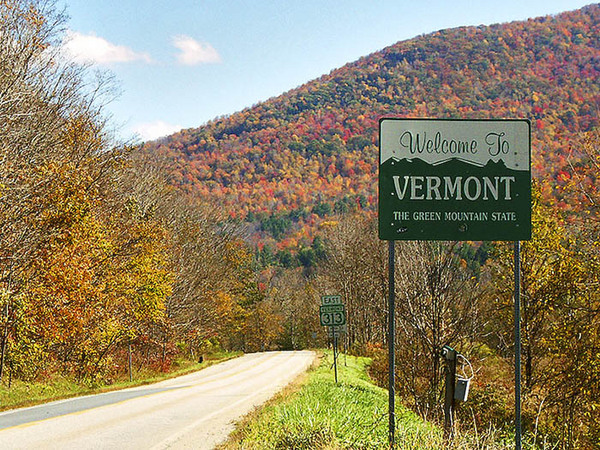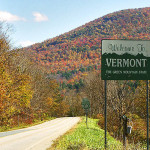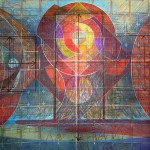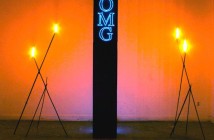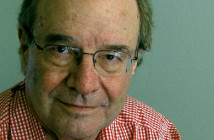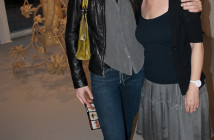THE DECORDOVA'S BIENNIAL: A VERMONTER'S PERSPECTIVE
On the morning Big RED & Shiny published a blog post about the DeCordova’s 2010 Biennial selections, a Vermont gallerist shot to my publisher and me -- I’m Art Critic for the Vermont alternative weekly Seven Days -- a fiery e-mail saying “How is this possible? Is VT no longer part of New England? Are all of the artists in this state so bad that they couldn't find one to meet their criteria?” In the article, Big RED listed the Biennial’s seventeen selected artists along with their home states. Seven hailed from Massachusetts, four from Maine, three from Connecticut, two from Rhode Island, and one from New Hampshire. DeCordova Assistant Curator Dina Deitsch, who had made the selections, with help from an advisory board that includes Mark Bessire, Director, Portland Museum of Art, George Fifield, Director, Boston CyberArts Festival, and Jennifer Gross, Curator of Modern and Contemporary Art, Yale University Art Gallery, was quoted in the piece as saying “The goal of the 2010 Biennial is to provide a snapshot of the broad range of art practices that are currently happening in New England, while being mindful of the traditions that feed those very practices.”
If the goal had been a snapshot of greater Boston, or of states that touch the Atlantic Ocean, Vermont excluded was just fine. But Deitsch said “New England.” Our Daily Red’s article also mentioned: “the DeCordova is hoping to collaborate with alternative exhibition spaces throughout New England to ‘create multiple-site installations’ to link the ‘exhibition with [other]artistic hubs.’”
So to try to figure out why the DeCordova didn’t find a worthy Vermont artist, and perhaps how an invisible place could qualify as an officially sanctioned “hub,” I got in touch with curator Deitsch. She immediately cleared up some basic misconceptions, and imparted valuable background information.
Their biennial idea, new for 2010, is an outgrowth of the DeCordova’s past annual exhibitions and they “have never managed to represent all 6 New England states in a single show nor have we ever aimed to do so. The idea of these shows being that they are showcases for work being made in the New England region...” Deitsch said. That’s fair enough. Perhaps in the future they shouldn’t highlight where the artists are from, so that the odd states out won’t feel snubbed. Deitsch also wrote, “It is not intended to be a comprehensive, encyclopedic account of New England’s art scene, nor is it, in any way, considered to be a ‘best of’ show.” That’s a departure from the DeCordva’s 2007 show statement, which states, “Each year the DeCordova Annual seeks to feature some of the best, most innovative and gifted artists working in the region.” It’s good news that the subjective word “best” doesn’t apply anymore. That point really needs to be clarified to the public. The idea that biennials aren’t more important than annual shows and that the DeCordova doesn’t try to hang the “best” work it can find, ought to be communicated to galleries, collectors and maybe the selected artists as well.
Considering how little I knew of the world south of U.S. Route 4, some in-depth Google research about the DeCordova’s biennial selections was in order. Deitsch mentioned the museum’s show will feature “both emerging and established artists.” But how could they tell who’s emerging, and who’s staying submerged? While that’s a puzzle I couldn’t solve, I did discover that five or six of the high profile artists to be exhibited in the Biennial are of the video/performance category. Well maybe that seems excessive considering the stated objective, according to Deitsch, of looking at “a broad range of art practices,” and “being mindful of the traditions that feed those practices” but video is more intellectual and less entertaining than watching a typical big screen TV. The DeCordova will demonstrate that in 2010.
Unfortunately, I also saw some nasty postmodern clichés during my comprehensive, encyclopedic Google searches. Irony is to aesthetic content as cotton candy is to the Healthy Eating Food Pyramid, and it’s turning into one of those traditions that feeds contemporary artists. The phenomenon also devours everything in its path: formalism, introspection, beauty, genuine unfeigned angst. I’ve also noticed that just because someone has an idea, that doesn’t mean it’s a good idea. Take 2010 Biennial artist Greta Banks’ quote from The Portland Phoenix regarding some of her new work: “Everyone has an anus but everyone goes out of their way to never admit that they have one...” Wow. Saint Thomas Aquinas couldn’t have said it better. Another Biennial artist, Randy Regier, has a piece that seems to be deconstructing the mythos of G.I. Joe? Liz Nofziger has other hackneyed doll references on her web site. In fairness, she has some interesting installations documented also - well, maybe not Verde, which is like Christo, except green.
The neo-sci-fi kitsch tradition of Alex Grey seems to be explored in all seriousness by Biennial artist Paul Laffoley’s mandalas. Designer Christopher Mir drops bombs on more or less the same rubble. Phil Lique’s 2-d art looks better than his installations, which seem rather self-important, and are nothing compared to what Dada was doing ninety years ago. Those selections are more like a snap shot of Chelsea in the 1990’s than of New England today. They don’t seem representative of the working class artists of New England I admire. Vermonters Bill Ramage or Alisa Dworsky really should have been Googled by someone at the DeCordova.
On the other hand -- again based on my “research” -- Biennial artists Laurel Sparks, Ward Shelley and August Ventimiglia’s installations do have some real meat on their bones. Oscar Palacio’s photography and anything by the distinguished Otto Piene are also going to be well worth seeing. Officially, the DeCordova wants to “put together a show that is visually compelling and has something to say about the state of contemporary art today,” and it will definitely say something. Yet to be seen is how much of the installed Biennial will be devoted to predictable, and ultimately insecure, “tropes” (to use the word de jour) that make so much contemporary fine art pretentious, Baroque, irrelevant and forgettable.
Regarding Vermont’s invisibility in 2010, the topic of such uppity discussions around here - nuff said. Our being incomparable to Boston, and visa versa, isn’t such a bad thing.
- “SA 2006 (October 13th) Vermont” by ‘paraflyer.’ CC-licensed image acquired on Flickr.
- Bill Ramage. The Centripedal Gates of Kiev (detail), mixed media on canvas, 40-by-8 feet. Photo: Marc Awodey
DeCordova Museum + Sculpture Park
"The 2010 DeCordova Biennial" will be on view from January 23 - April 25, 2010.

